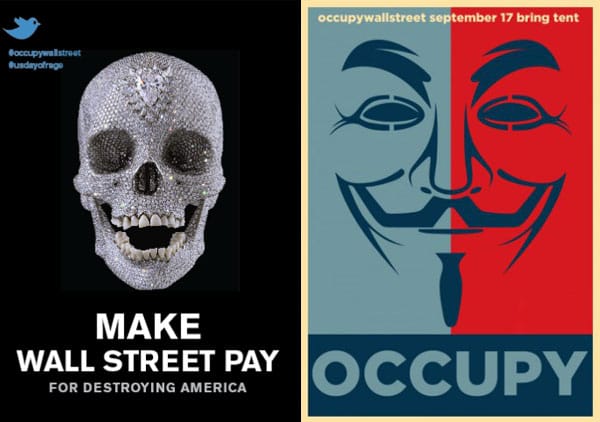Required Reading
This week … Warhol's Headline works, a 2003 interview with Sol LeWitt, Twitter paintings by Evan Roth, Kapoor & Isozaki partner for an inflatable concert hall, world's earliest Christian inscription is identified, Gagosian's Madison Ave shop closes, NY pics from 1974, color TV spots from the 1960s a

This week’s there’s a little bit of everything, including the links to the arty posters above. Interesting how Fairey’s Obey still has milage, but also how Damien Hirst’s “For the Love of God” (2007) has become a symbol, if not THE symbol, of the recent gilded age.

NPR looks at the National Gallery of Art in DC’s Headlines show featuring Warhol’s tabloid cover works.

Check out this extensive interview with Sol LeWitt from 2003 in Bomb magazine, which was picked up by Longform. It has some great insights, including this one:
The early ‘60s was a pivotal time. The thinking of John Cage derived from Duchamp and Dada. I was not interested in that. My thinking derived from Muybridge and the idea of seriality, from music. I thought Dada was basically perceptual, relying on the often outraged response of the viewer. Pop art was a legacy of this. I was not interested in irony; I wanted to emphasize the primacy of the idea in making art. My interest, starting around 1965, was in building conceptual systems, which grew out of Minimalism. Basically it was a repudiation of Duchampian aesthetics.

Since we’re on the topic of the 1960s, these multi-touch Twitter paintings by Evan Roth are surprisingly minimalistic and look like art works from the 1960s.

Anish Kapoor and Arata Isozaki are partnering to create an inflatable mobile concert hall.

The world’s earliest identified Christian inscription has been identified in Rome:
Officially called NCE 156, the inscription is written in Greek and is dated to the latter half of the second century … The only other written Christian remains that survive from that time period are fragments of papyri that quote part of the gospels and are written in ink. Stone inscriptions are more durable than papyri and are easier to display. NCE 156 also doesn’t quote the gospels directly, instead its inscription alludes to Christian beliefs.

The Gagosian Gallery has shuttered its Madison Avenue retail shop and will be taking it online. The New York Post says:
It’s unclear why the space suddenly went dark. But when an art insider was asked if the closure might be for financial reasons, the source shot back, “Not with Larry, it isn’t.”

Gothamist spots 14 photos of life in New York, circa 1974, that the US National Archives posted. The photo of classic early 70s graffiti demonstrates, IMHO, how ugly lots of that early stuff was. Graffiti, you’ve come a long way, baby.

The Atlantic digs up some beautiful color TV spots from network television in the 1960s at a time when they were still trying to sell the advantages of color on the boob tube.

Beautifully deep. A shrine to a buffed street art work … via Vandalog.
Required Reading is published every Sunday morning, and it is comprised of a short list of art-related links (10 or less) to long-form articles, videos, blog posts or photo essays worth a second look.





